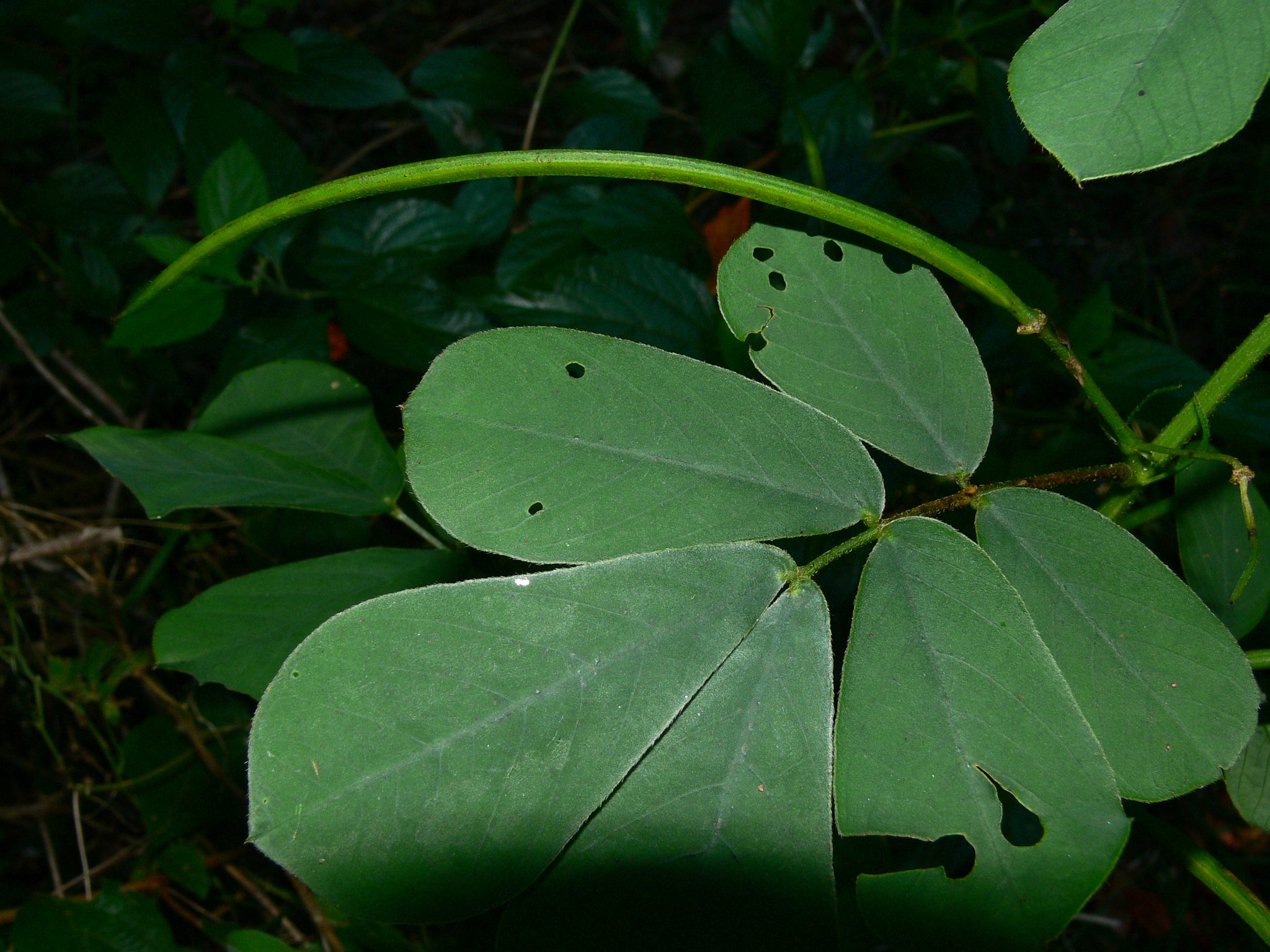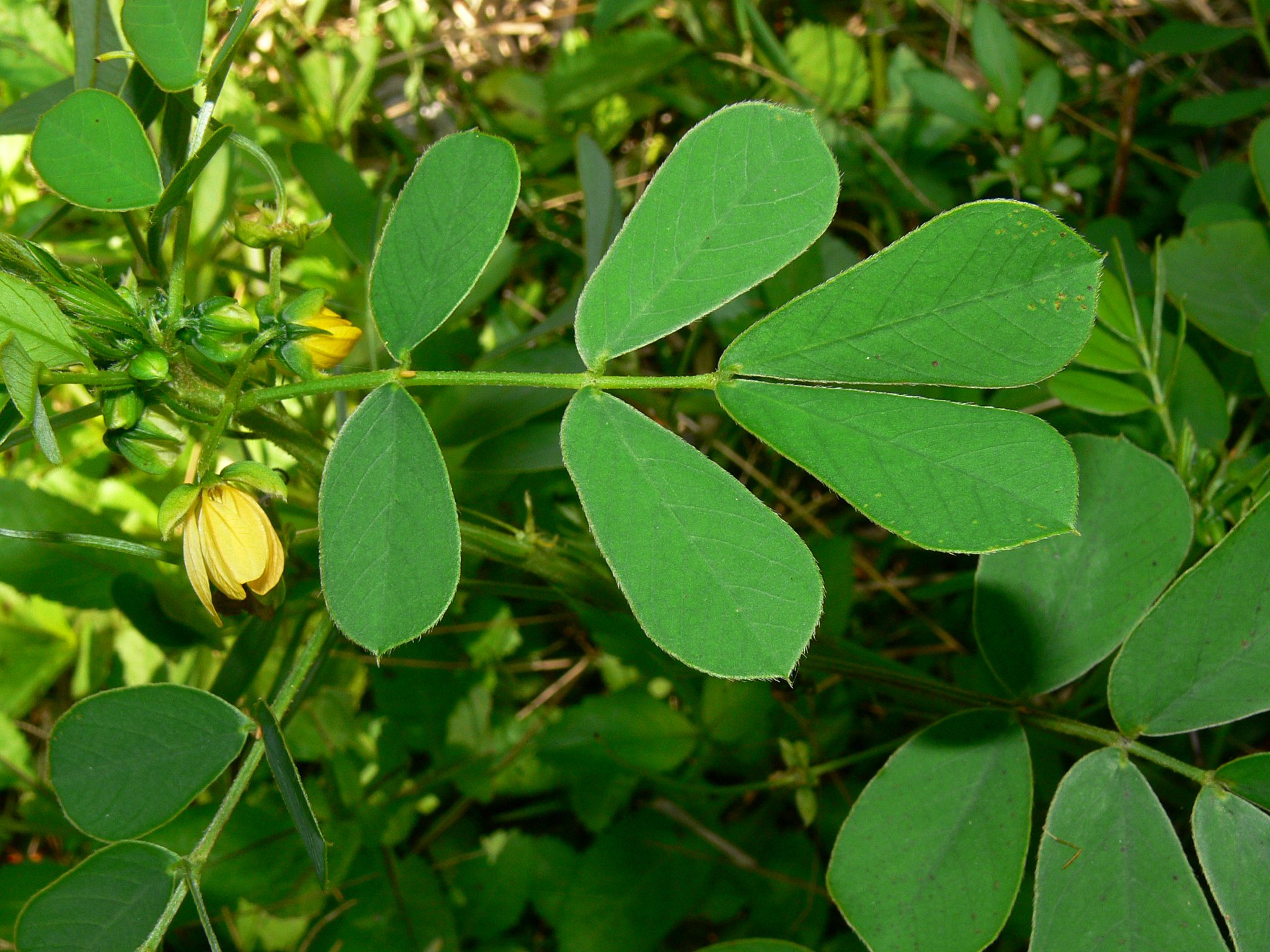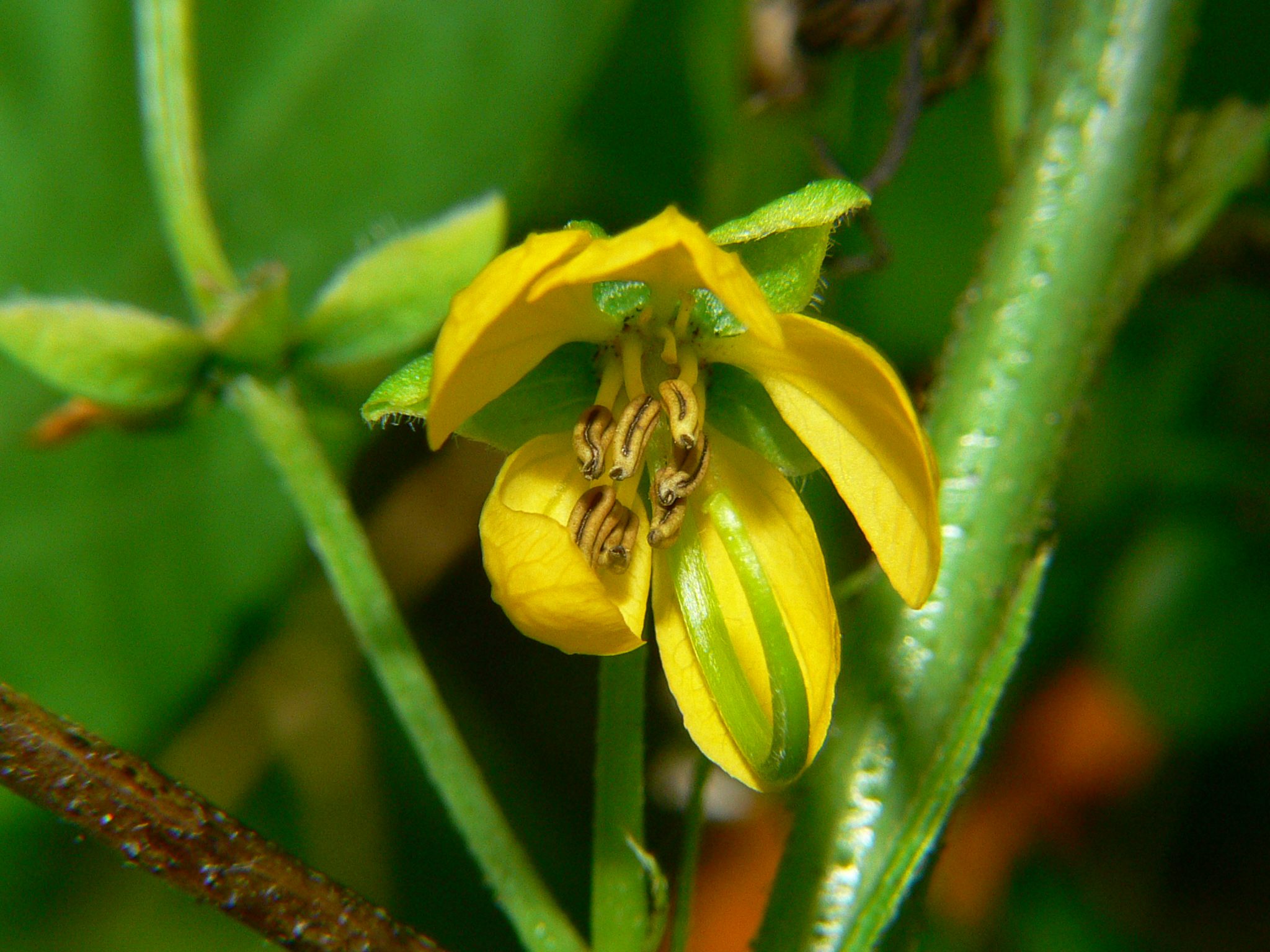Sicklepod, Java bean
Senna obtusifolia, Fam. Caesalpiniaceae




Annual or short-lived perennial sub-shrub to 2m, young stems with short hairs. Produces a distinctive foetid smell when leaves are crushed.
| Weed Category: |
Restricted invasive plants Category 3 Plants declared invasive under the Biosecurity Act 2014, that are present in QLD.
Not to be distributed or disposed of.
|
| Weed: | Yes |
| Form or habit: | Shrub |
| Family: | Caesalpiniaceae |
| Leaf: | Compound Alternate Compound, alternate pinnate with opposite stalkless or shortly stalked leaflets, lacking a terminal leaflet; usually increasing in size from lower to upper pairs. Glands may be present on stalk or between lower leaflets. Total length 30-100mm, including the 15-20mm long channelled stalk. Leaflets usually three pairs, bluish-green, obovate, 40-50 x 20-30mm, with a small soft point; prominent orange 2-3mm long cylindrical gland present between the basal leaflets. Stipules persistent, narrow and up 20mm long. |
| Flower conspicuous: | Conspicuous |
| Flower colour: |
Yellow |
| Flower description: | Yellow somewhat orchid-like or cup-shaped with 5 sub-equal-sized petals; about 10mm long, usually in pairs borne in the upper leaf axils. |
| Fruit conspicuous: | Conspicuous |
| Fruit colour: |
Brown |
| Fruit: | Dry |
| Fruit description: | Dehiscent pods with hard seeds. Pods sickle-shaped, cylindrical, sparsely and minutely hairy, brown 120-180 x about 3mm, with 30-50 plump shiny chestnut-brown seeds, 4-6.5 x 2-4mm. |
| Habitat: | |
| Distribution | |
| Food source for: | |
| Toxicity: | Toxic if ingested |
| Origin: | Tropical America |
| Notes: | Spread by: seeds expelled from opening pods, water, contaminated soil on machinery (harvesting, earthmoving, and 4WDs), animal hooves, manure, contaminated harvest material and fodder. Invades/threats: Everywhere grazing, agriculture and the environment are all under threat. Notes: weedy sennas produce numerous seeds that, in a short time, may accumulate a large soil seed-bank. As seeds remain viable for up to a decade or more, germination can take place over many years, whenever conditions are suitable. They are capable of forming dense stands and compete with pastures and crops for light, moisture and nutrients. Sicklepod forms dense stands that impact on productivity. Its roots also exude compounds which reduce the growth of nearby seedlings of other species. Sicklepod is most similar to stinking cassia (S. tora). Most species are toxic to cattle and while mature pods and seeds are sometimes eaten, the plants are relatively unpalatable and soon die off. Category 3 restricted invasive plant under the Biosecurity Act 2014, it must not be given away, sold, or released into the environment without a permit. The Act requires everyone to take all reasonable and practical steps to minimise the risks associated with invasive plants and animals under their control. This is called a general biosecurity obligation (GBO). |
| Information sources: | Mackay Regional Pest Management Group (2018) Weeds of the Mackay Whitsunday Region Second Edition. |



